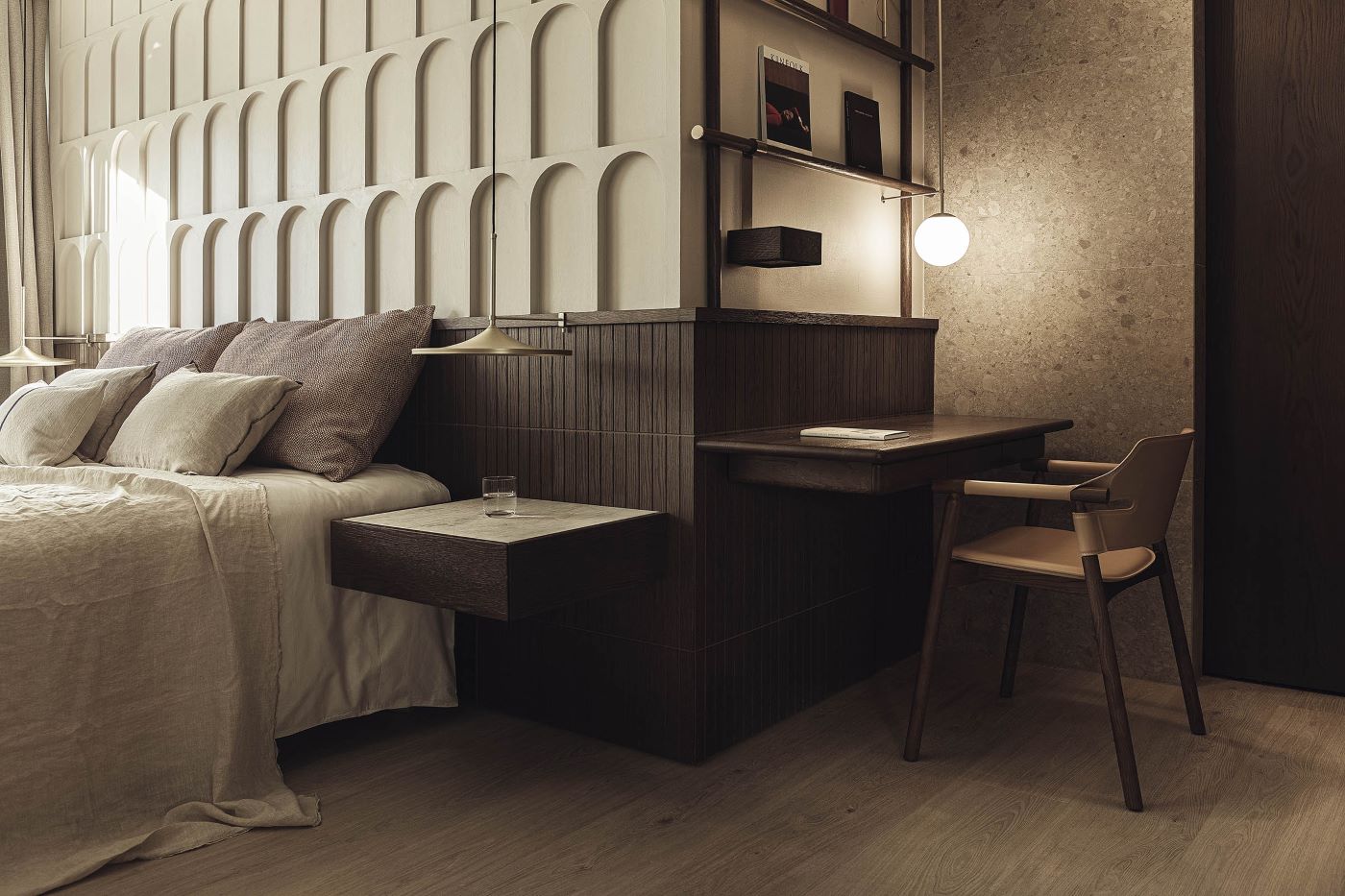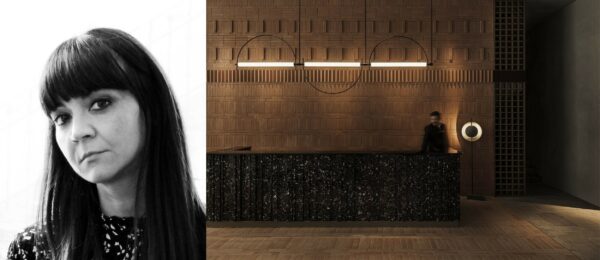
Not a Number Architects recently earned the Interior Design of the Year – Living Space award at the LIV Hospitality Design Awards 2022 for their remarkable work on the MonAsty Autograph Collection in Thessaloniki. Inspired by the city’s Byzantine heritage, the hotel blends spirituality and luxury. Thessaloniki was once a significant part of the Byzantine Empire, and remnants of its Christian orthodox temples still grace the historic center. Not a Number Architects aimed to capture this essence while infusing local authenticity into the global Marriott brand. MonAsty’s proximity to the city’s only operating monastery influenced the design, creating a peaceful atmosphere with natural materials and subdued lighting. The hotel combines monastic serenity with 5-star luxury, offering guests a unique retreat.
Founded in London in 2008 by Ermis Adamantidis and Dominiki Dadatsi, Not a Number Architects create meaningful spaces through client collaboration, innovation, and design research. In this interview, Dominiki discusses the inspiration and creative process behind MonAsty’s award-winning design, exploring history, spirituality, and luxury.

Dominiki Dadatsi, Not a Number Architects / MonAsty Autograph Collection
Could you tell us a bit about yourself and your professional journey? How did design come to have such an important role in your life?
Our professional journey started in London just after completing our masters, me at AADrl and Ermis at UCL. We had the chance to start our careers0.2 next to major figures of architecture like Zaha Hadid and Norman Foster. Later we came back to our hometown Thessaloniki and established our own studio, travelling all the time around the world due to commissions from smaller scale and space installations to building scale projects. The design has always dominated our everyday life. It has always been more a way of living, a lifestyle than a profession. It is a way to communicate our ideas a need to express our thoughts.
Is there a philosophy, a vision, or a special process that influences how you approach design? Would you say that you apply it to your life as well?
We always try to approach every design project individually and holistically, based on its own characteristics and restrictions, which when used as an advantage rather than a disadvantage create something that differentiates it from the rest, its uniqueness. We also strive to take care of every aspect of a project in order to have a coherent result. So that every detail of the final outcome can be loyal to the concept and the aim of the design. We don’t really have a specific process, as a holistic design approach isn’t one size fits all. It just means that you observe the parameters in order to create the optimal result. It’s a way of thinking rather than an exact system, that we attempt to apply in every aspect of our life, physically, emotionally, socially, and spiritually.
How did you come to the decision to adopt a concept centered around spirituality and mysticism for the hotel, and what was the inspiration behind this theme?
Our site is located in our hometown, Thessaloniki, in one of the city center’s busiest spots, next to open-air markets, office buildings, commercial stores and historic monuments. With a quick stroll in the area, you realize the city’s rich Byzantine heritage. It was the second most important metropolis of the Byzantine Empire and a large amount of Christian orthodox temples of that era are still standing. More precisely, our site neighbours the Monastery of Agia Theodora, which is a relatively newer building and the only operating monastery inside the city center.
When we started digging for foundation works, we revealed the ruins of an older Byzantine monastery that co-existed with its workshops on a larger area including our site. After the great fire that broke out in 1917 in Thessaloniki, the old monastery was destroyed and a new one- Agia Theodora- was built in a smaller area, on the remnants of the older one.
So, our design was deeply inspired by the Byzantine monastery that was hidden carefully underneath our site since the first millennia. We were really touched by the charm of the old, of the Byzantine architecture but also of the mystic atmosphere of a monastery and our goal was to introduce a contemporary approach to Byzantine Architecture in terms of materiality, geometry and ambience.
How did it feel to work on a project that gives a modern touch to a period in History that has been gone for more than half a millennium?
Whilst the Byzantine era is long gone, its influence is still evident and vibrant in the city of Thessaloniki, since a considerable number of historic monuments from that era are still preserved and open to visit. So, design-wise, byzantine-monastic architecture references were something very familiar to us. It was really exciting that we got the chance to work on a delicate and deeply connected city concept like that and adapt it to a contemporary perspective. At the same time, it was very challenging as we had to balance and respect the weightiness of the historical references and simultaneously manage to create a mystic atmospheric hospitality experience, but in the end, watching the realized result was the greatest reward.
What did you find most challenging while working on the project and what did you enjoy the most?
The biggest challenge of our design process was probably the small site’s footprint compared with the standards of a luxury 5* hotel has to accommodate. Taking that under consideration, we designed an open-plan layout, that lets you transition seamlessly from one space to another. With little to no partitions, we managed to widen the space’s field of view, making it look bigger than it actually is, while some areas were designed to facilitate double or triple functions at the same time.
We also really wanted to merge and balance the spirituality, austerity and monumentality of monastic architecture, with a cozy, intimate and high-standard environment, a luxury hotel requires. So, we met in between those two worlds. We got inspired by the materiality, color pallet and forms of byzantine-monastic typologies, while simultaneously taking under consideration all the functional and operational issues that may have applied. Coming up with such a strong concept, that’s deeply connected with the city’s heritage and realizing it step by step was probably what we enjoyed the most.
What does winning the LIV Award mean to you in terms of validation and recognition of your work in the interior design industry?
It’s a great honor for our studio to receive the LIV Awards – Interior Design of the Year.
MonAsty’s success as well as Greece’s large tourism industry gave us the chance to expand our expertise in the hospitality sector. We’re currently working on variable larger and smaller scale projects regarding hospitality, housing and commercial facilities. Some of these are vacation houses in summer destinations, a city hotel in the urban fabric of Volos city and a boutique hotel in a preserved monumental building on the island of Corfu.
What advice would you offer to aspiring architects or designers who dream of establishing themselves in the industry?
It takes patience and hard work. We live in such a fast-paced environment, where we constantly seek new stimuli and validation. So, committing and applying hours of work on a project and all the quirks and restrictions it may have, sometimes can feel devastating. But being yourself, creating a unique aesthetic that you feel best represents you and focusing on what you love and pleases you, will make establishing yourself follow naturally.